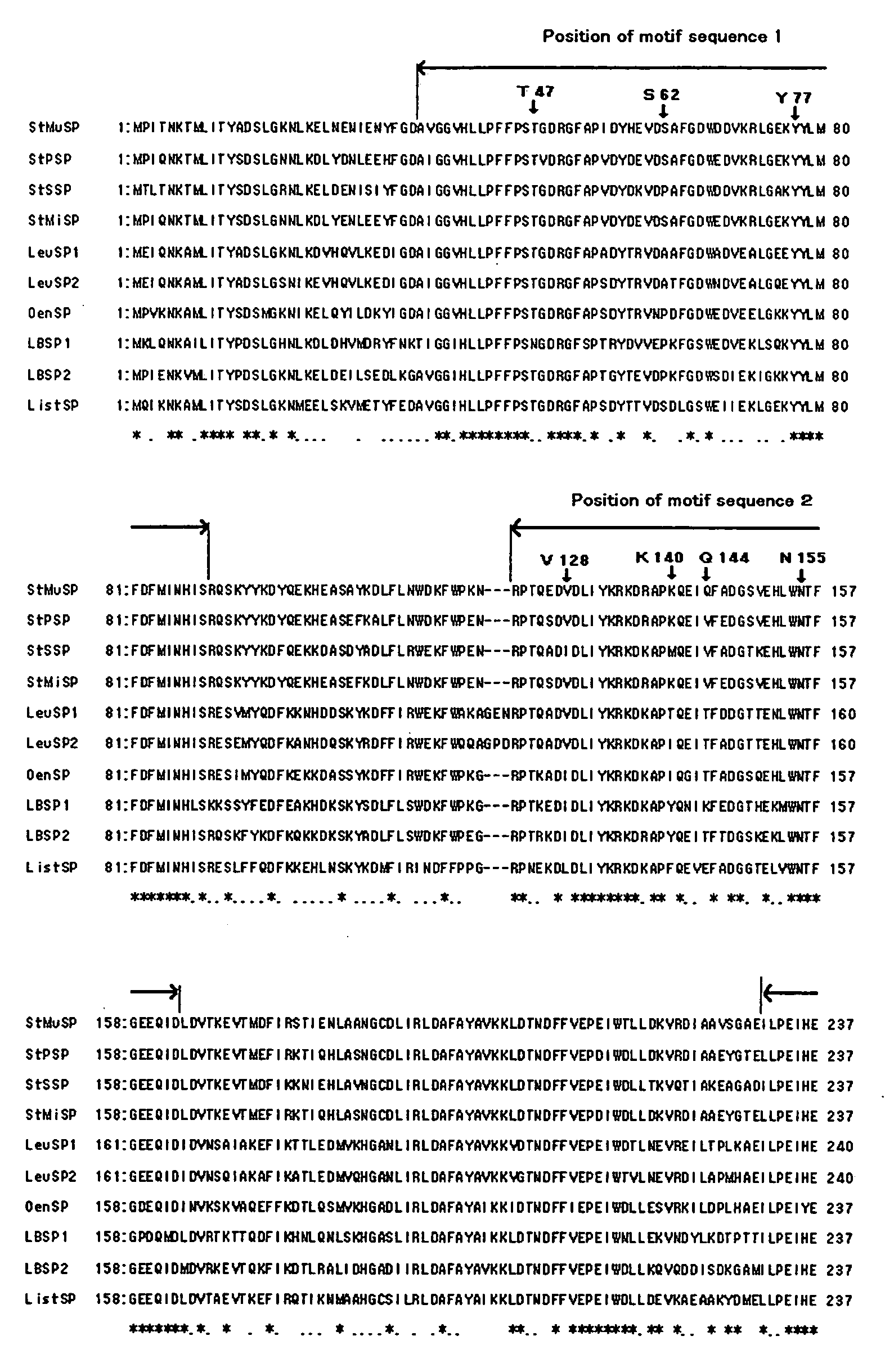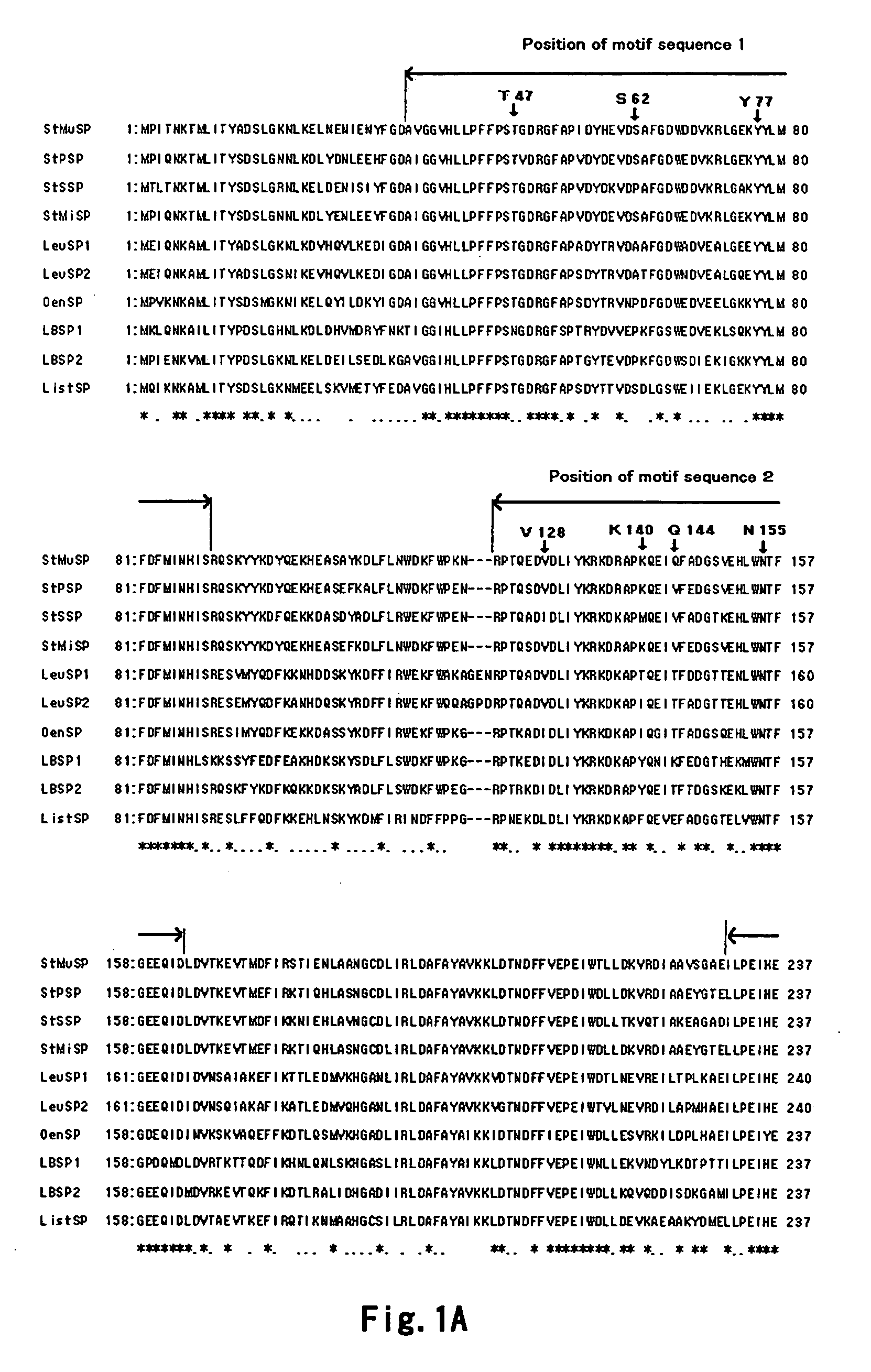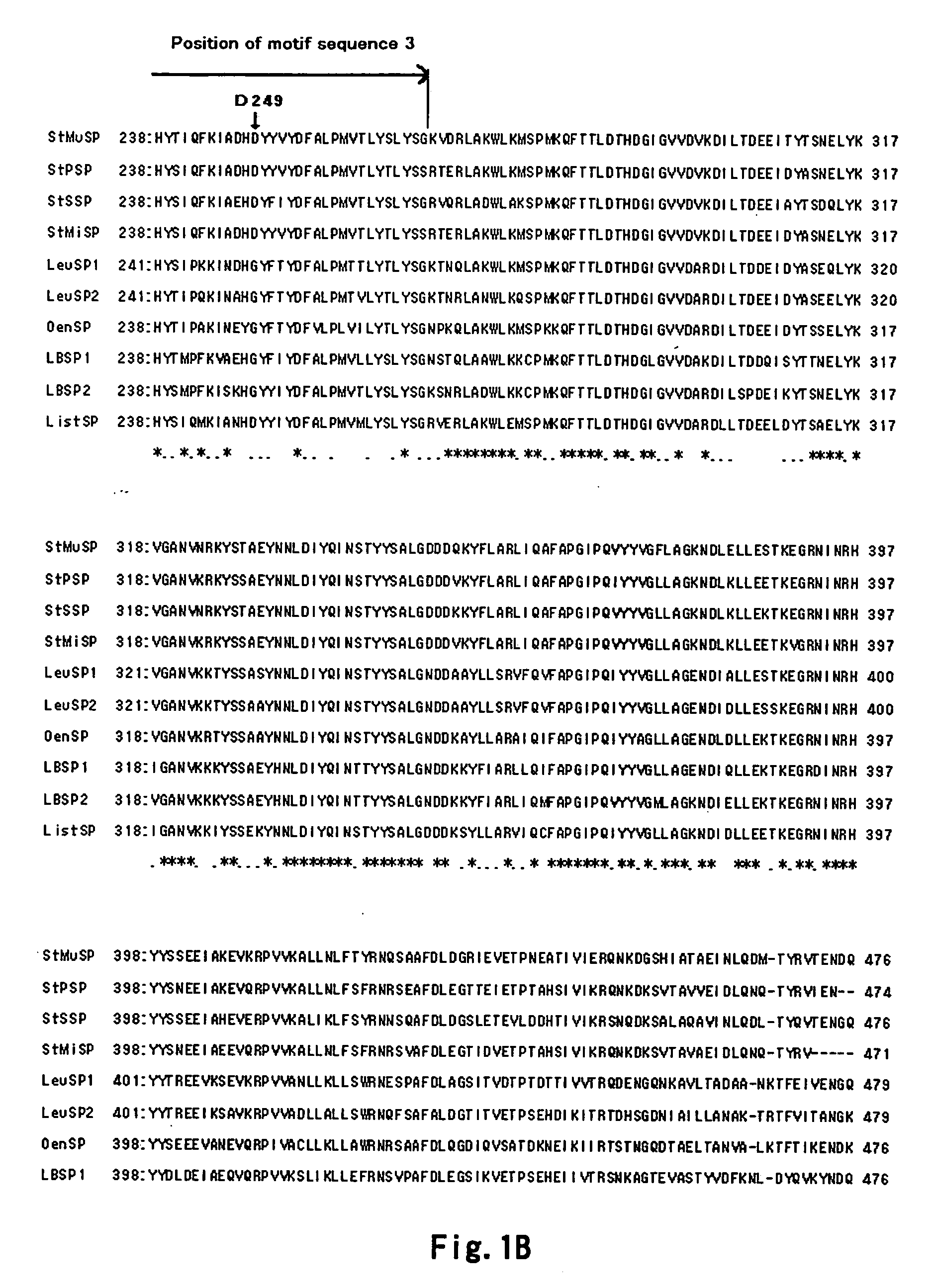Method for Improving the Thermostability of Sucrose Phosphorylase (Sp)
a technology of sucrose phosphorylase and thermostability, which is applied in the direction of enzymology, organic chemistry, transferases, etc., can solve the problems of high cost, inability to reduce purification costs, and rare amylose obtained, and achieves improved thermostability, high activity, and efficient production of g-1-p
- Summary
- Abstract
- Description
- Claims
- Application Information
AI Technical Summary
Benefits of technology
Problems solved by technology
Method used
Image
Examples
example 1
Preparation, Screening and Sequencing of a Gene of a Sucrose Phosphorylase Having Improved Thermostability
[0486]Briefly, a random mutation was introduced into a Streptococcus mutans-derived sucrose phosphorylase gene, and the randomly mutated gene was introduced into Escherichia coli to express a randomly mutated sucrose phosphorylase, and selected a Escherichia coli which expresses, among the expressed sucrose phosphrylases, a sucrose phosphorylase having improved thermostability which has glucan synthesizing ability, after heating at 52.5° C. for 15 minutes, and from this Escherichia coli, a gene of the sucrose phosphorylase having improved thermostability was isolated and its sequence was determined.
[0487]The details are as follows.
[0488]Firstly, a random mutation was introduced into the natural Streptococcus mutans-derived sucrose phosphorylase gene set forth in SEQ ID NO: 1 by error-prone PCR method known to those skilled in the art to give a randomly mutated SP gene. Under thi...
example 2a
Preparation of Sucrose Phosphorylase Having Improved Thermostability by Site-Directed Mutagenesis and Measurement of Thermostability
(1) Preparation of Sucrose Phosphorylase Having Improved Thermostability by Site-Directed Mutagenesis
[0495]Briefly, a library having a combination of the 8 mutations described above was prepared. The library was screened to provide sucrose phosphorylase with further improved thermostability.
[0496]To be described in detail, an expression vector of sucrose phosphorylase having improved thermostability was prepared in the same manner as in Example 1. In this example, genes encoding SP having improved thermostability which has only one substitution in a position revealed to contribute to improvement of thermostability, genes encoding SP having improved thermostability which has a any combination of 2 to 7 substitutions, and a gene encoding SP having improved thermostability which has all the 8 substitutions were prepared. By way of example, the base sequenc...
example 2b
Preparation of Sucrose Phosphorylase Having Improved Thermostability Substituted with Various Amino Acid Residues and Measurement of Thermostability
[0511]A plasmid containing a modified sucrose phosphorylase gene was prepared in the same manner as in Example 2A except that a primer designed to substitute one of T47, S62, Y77, V128, K140, Q144, N155 and D249 with another amino acid residue was used, and various modified SP enzyme solutions were obtained.
[0512]The thermostability of these modified SP enzyme solutions was determined by measuring the remaining activity after heating was conducted in the same manner as in Example 2A (2) (i) except that the heating condition was 55° C. for 20 minutes. The results are shown in Table 4B below.
TABLE 4BEnzymeremainingsolutionactivity (%)T47S47.3T47I50.0S62P33.4S62A31.0S62K26.3Y77H22.6Y77R34.8V128L26.6V128I49.5N155S37.8WT11.3K140M39.9K140C45.9K140F47.4K140I23.0K140V51.4K140Y53.8Q144R23.2Q144H38.2Q144I33.6Q144K30.3Q144V33.1D249G47.7D249C22.5D24...
PUM
| Property | Measurement | Unit |
|---|---|---|
| temperature | aaaaa | aaaaa |
| temperature | aaaaa | aaaaa |
| temperature | aaaaa | aaaaa |
Abstract
Description
Claims
Application Information
 Login to View More
Login to View More - R&D
- Intellectual Property
- Life Sciences
- Materials
- Tech Scout
- Unparalleled Data Quality
- Higher Quality Content
- 60% Fewer Hallucinations
Browse by: Latest US Patents, China's latest patents, Technical Efficacy Thesaurus, Application Domain, Technology Topic, Popular Technical Reports.
© 2025 PatSnap. All rights reserved.Legal|Privacy policy|Modern Slavery Act Transparency Statement|Sitemap|About US| Contact US: help@patsnap.com



